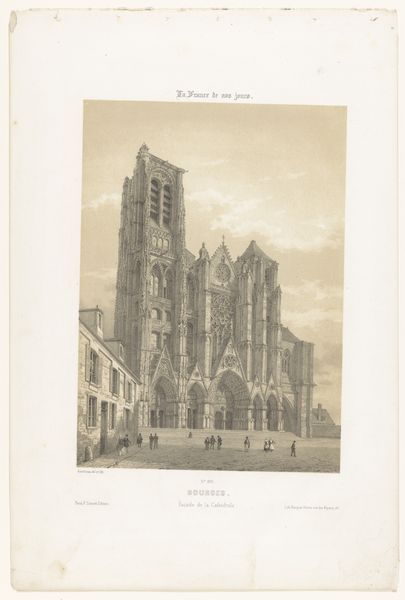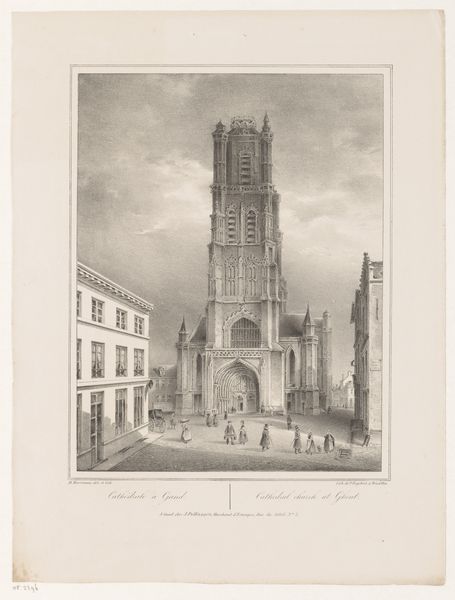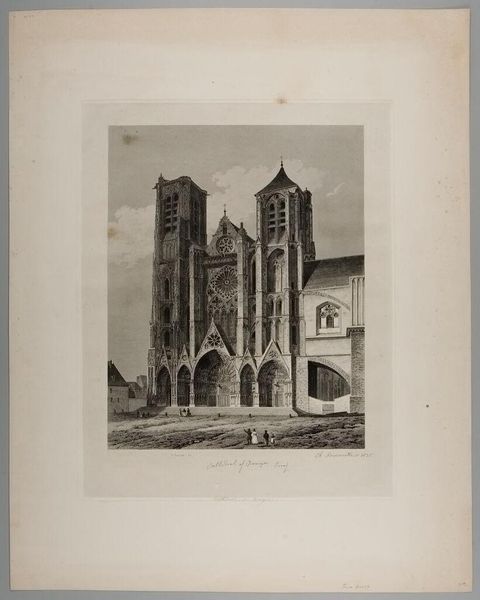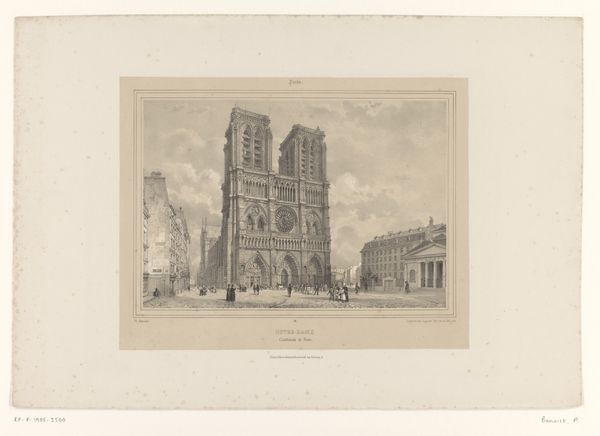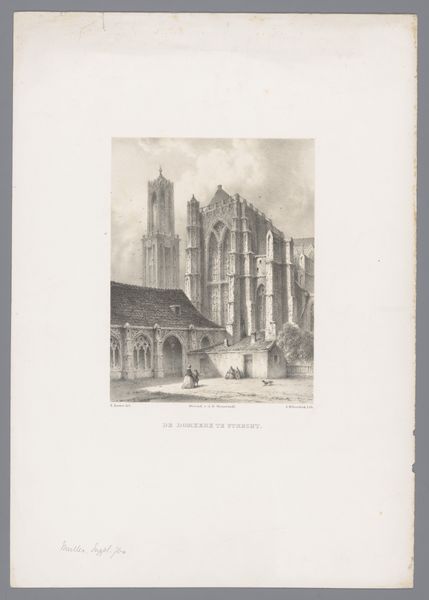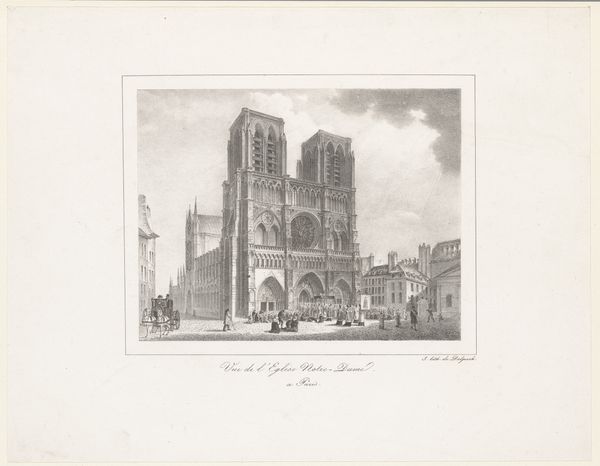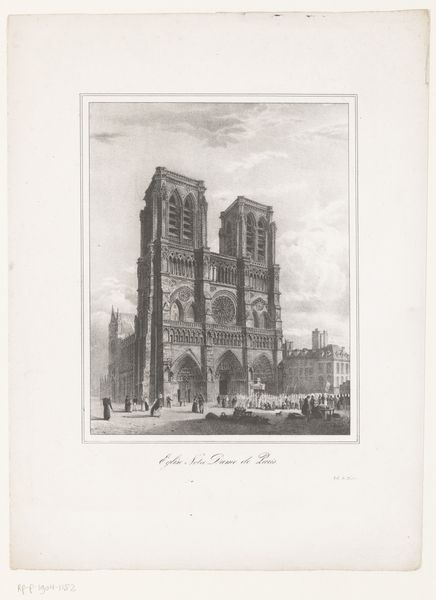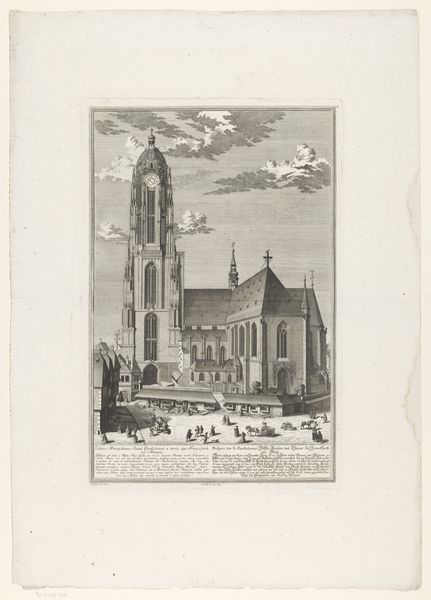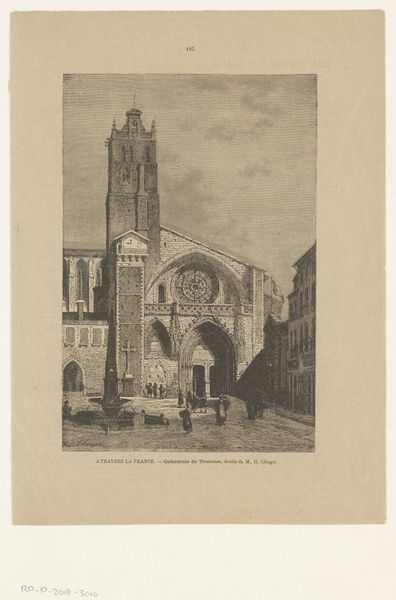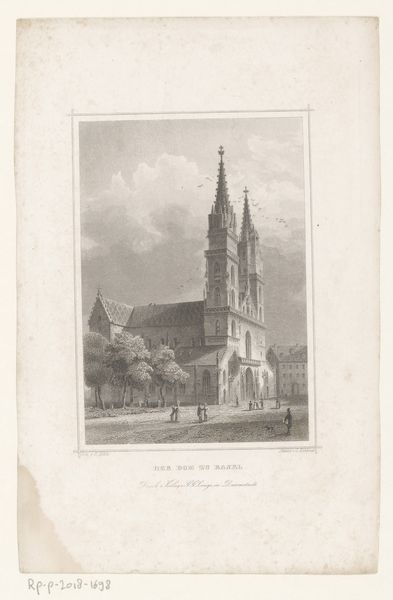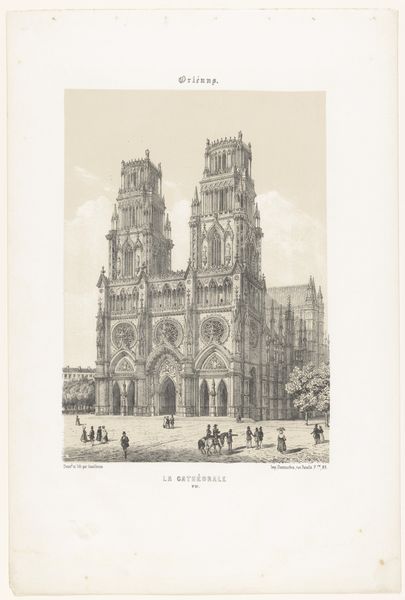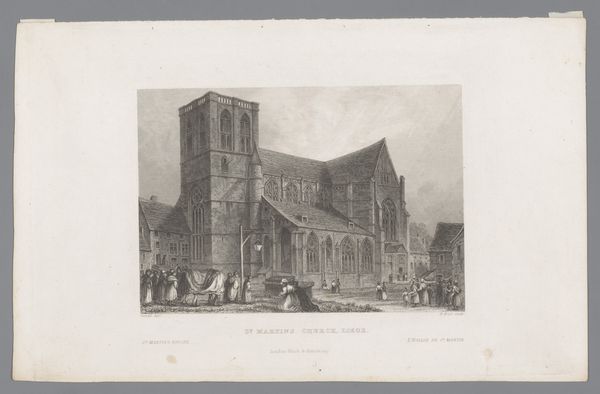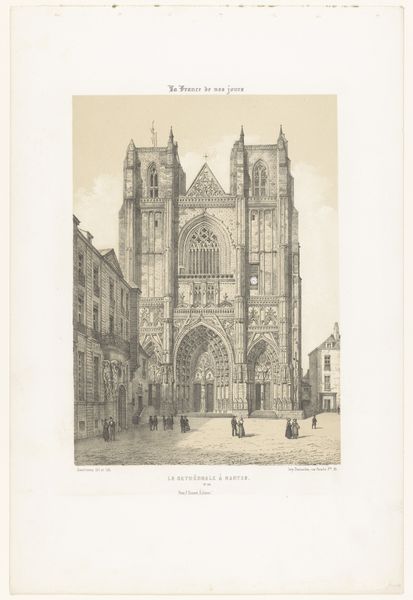
drawing, paper, pencil
#
pencil drawn
#
drawing
#
landscape
#
paper
#
romanesque
#
pencil
#
cityscape
Dimensions: height 567 mm, width 399 mm
Copyright: Rijks Museum: Open Domain
Editor: So, this is Charles-Claude Bachelier’s “View of the Saint Gereon Church in Cologne," a pencil drawing from 1850. It’s on paper, of course, but the precision! It feels almost architectural in its detail. What's your take on this? Curator: Well, it's more than just architectural precision; it’s about the social act of representation itself. Consider the graphite, mined and processed, the paper manufactured—each step a product of industrial labor. Then there’s Bachelier himself, whose labor is manifested in each pencil stroke, capturing not just the building but a specific moment in Cologne's urban development. What do the figures in the foreground tell us about access to this space? Editor: They look like regular people, perhaps observing the church themselves. But, what about the choice of pencil as opposed to, say, paint? Was that purely stylistic, or is there a deeper meaning there? Curator: The pencil democratizes art making. Unlike expensive oil paints, pencil and paper were relatively accessible, enabling a broader segment of society to participate in visual culture. And consider that prints could easily reproduce the image for further consumption. But the level of detail... think of the intense labour to create this! Editor: So you're suggesting the medium itself opens questions of production and consumption in 19th-century art? Curator: Precisely. This drawing is not just a view, it’s an artifact embedded within a network of materials, labor, and social relations. How does considering these processes shift your understanding? Editor: It makes me realize that we're looking at the church not just as a beautiful building but as part of a larger system, an interaction of industrial processes, human effort, and social access, materialized on paper. Fascinating! Curator: Absolutely. It goes to show how even a seemingly straightforward landscape drawing can be a complex record of its time, reflecting the material conditions of its making and reception.
Comments
No comments
Be the first to comment and join the conversation on the ultimate creative platform.
